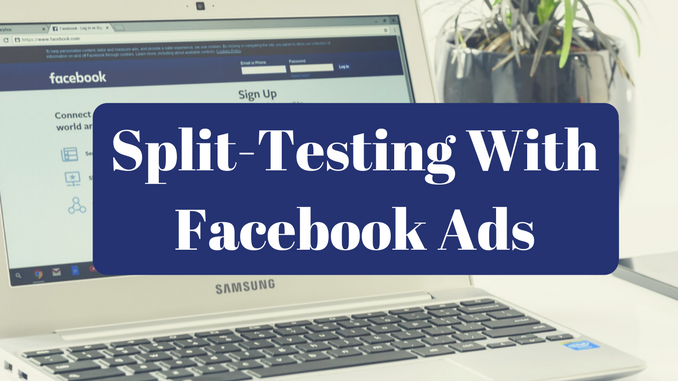Facebook is an excellent resource for promoting your business, products or services, but far too many people post ads and then simply walk away from them. If one of your ads is doing very well or very poorly, you need to try to figure out why, and that is what split-testing can provide you. Split-testing allows you to compare two different ads, but change components of the ad slightly, like images or titles. You run the ads at the same time, then see which of them did better, looking at the components of the more successful ad. This allows you to know what you should do next time.
What to Track During Split-Testing
The first thing to consider when you are going to run some split-tests with Facebook ads is exactly what you should be tracking on each ad. There are actually a few different elements of the ad that you can differ a little bit in order to figure out which one does the best. Keep in mind you will continue running different split-tests until you have compiled data that show exactly what is most successful with these types of ads.
Design – The first area of the ads where you can do split-testing is in the design itself. This lets you know about things like images, landing pages, headlines, and placement of the ads to see which one gets more activity from Facebook users. You might find that a funny picture for your product does considerably well than a touching picture.
Targeting – There is also the collection of targeting data that can vary quite a bit. This might take a little longer to run tests, but it is definitely worth it. You are selecting who will see the ad based on things like their location, interests, age, gender, relationship status, and education or career level.
Test Only Small Components at a Time
Because there are so many different things to test on a single Facebook ad, you might not want to do too much at one time. It is good to start with just one or two elements of an ad, then leave the rest of the ad exactly the same. For example, you can start by having all targeting selections the same on both ads, but then change just the image of the design. That way, you know that one ad is more successful than the other only because of the image you chose. Keep doing this by alternating just one or two parts of an ad, but leave the rest of both ads the same. It makes it much easier to track and test.
Consider the Type of Ad You Are Testing
Remember that the results from split-testing on Facebook are a little subjective. The type of ad you are testing can change the results between the ads rather quickly, even though the components aren’t making much of a difference. This is why you need to run both ads at the exact same time, since the following day or even a few hours later can make a huge difference. This might give you incorrect results.
Even when you feel you have run all your tests and have created the “perfect” ad, you should return to split-testing often, particularly when running ads for brand new products or services you are promoting. People and trends change constantly on Facebook, and this does require being knowledgeable about those changes and adapting to them. Split-testing is an excellent way to notice how things change and take advantage of the knowledge.

